Iran E-Visa Rejection | How to Avoid and Overcome Common Issues
For tourists eager to explore Iran, obtaining the appropriate visa is a crucial step in the travel planning process. The e-visa, introduced to streamline and simplify entry procedures, has become an essential tool for international travelers.
An e-visa allows tourists to apply online, reducing the need for in-person visits to consulates and embassies. This digital process not only saves time but also offers a more convenient way.
The e-visa includes various types of visas tailored to different travel purposes, such as tourism, business, and medical treatment. The application involves submitting personal details, travel plans, and necessary documents online, making it easier for tourists to prepare for their trip to Iran.
However, despite its convenience, the e-visa process can sometimes result in rejections. Navigating the intricacies of the application and ensuring all requirements are met is essential to avoid such outcomes. This blog post explores the common reasons for e-visa rejections, provide guidance on how to avoid them, and offer solutions for travelers who face this challenge.
What is an Iran E-Visa?
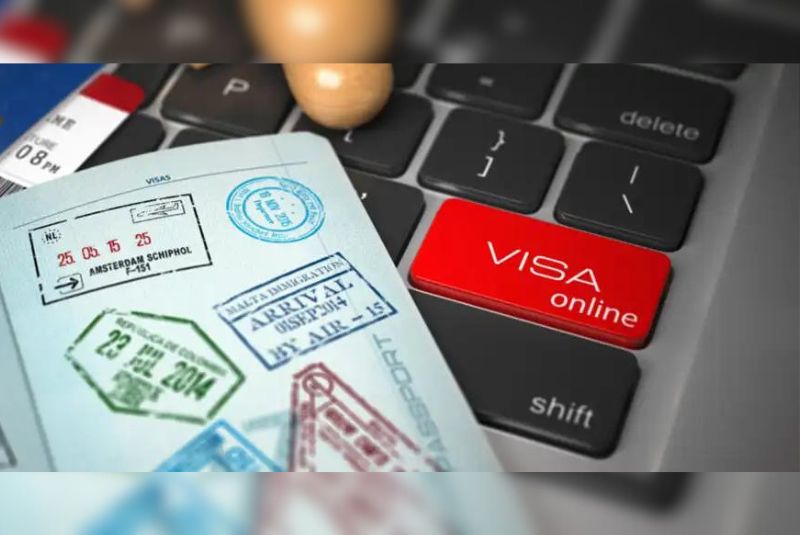
An Iran e-visa is an electronic visa that allows travelers to apply for and obtain their visa online, eliminating the need to visit an embassy or consulate in person. This digital system was introduced to streamline the visa application process, making it more convenient and efficient for international tourists. The e-visa facilitates entry into Iran for various purposes, including tourism, business, and medical treatment, by providing a hassle-free way to obtain the necessary travel authorization.
Types of E-Visas Available for Iran

Iran offers several types of e-visas to cater to different travel needs:
Tourist E-Visa (Type B)
Intended for individuals visiting Iran for tourism purposes.
Valid for a stay of up to 30 days, with the possibility of extension.
Business E-Visa (Type A)
Designed for travelers entering Iran for business meetings, conferences, or trade purposes.
Typically allows for a stay of up to 30 days, with potential extensions based on the nature of the business activities.
Medical E-Visa (Type T)
Issued to patients seeking medical treatment in Iran, as well as their companions.
The duration of stay depends on the treatment period and can often be extended as required.
Student E-Visa (Type E)
For students enrolled in educational institutions in Iran.
Validity and duration are tied to the length of the study program.
Transit E-Visa (Type C)
For travelers passing through Iran while traveling to another country (En Route).
Generally valid for a short stay, typically up to 7 days.
Application Process Overview
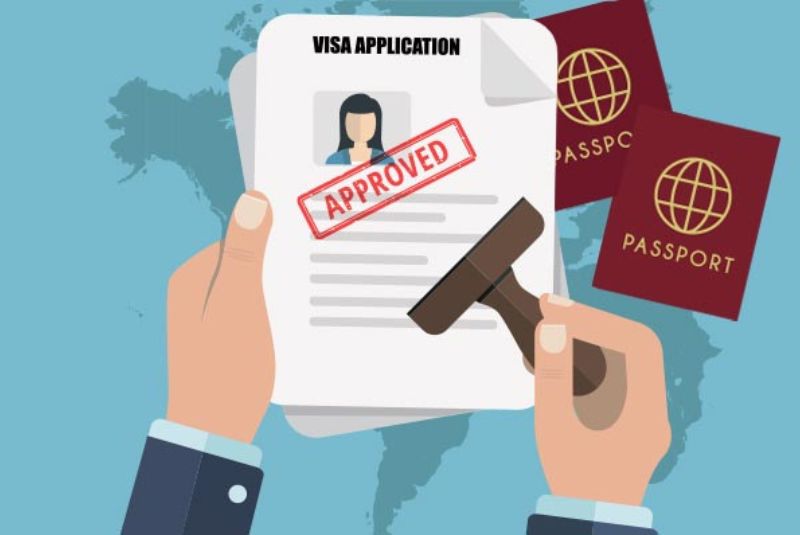
Applying for an Iran e-visa involves several key steps:
1- Online Application Form
Visit the official e-visa website (evisa.mfa.ir) and complete the online application form.
Provide personal information, passport details, and travel plans.
2- Document Submission
Upload required documents, including a scanned copy of the passport, a recent passport-sized photograph, and any additional documents specific to the visa type (e.g., medical records for a medical e-visa).
3- Fee Payment
Pay the visa processing fee online. The fee varies based on the visa type and nationality of the applicant.
4- Application Review
The submitted application is reviewed by Iranian authorities. This process can take anywhere from a few days to a few weeks.
5- Approval and E-Visa Issuance
If approved, an e-visa approval letter is sent via email. This letter must be printed and presented upon arrival in Iran.
The actual visa stamp is typically placed in the passport at the port of entry.
6- Entry to Iran
Upon arrival, present the printed e-visa approval letter, passport, and any other required documents to the immigration authorities for verification and visa stamping.
By following these steps and ensuring all information and documents are accurately provided, travelers can successfully obtain their Iran e-visa and embark on their journey to explore this fascinating country.
Common Reasons for E-Visa Rejection
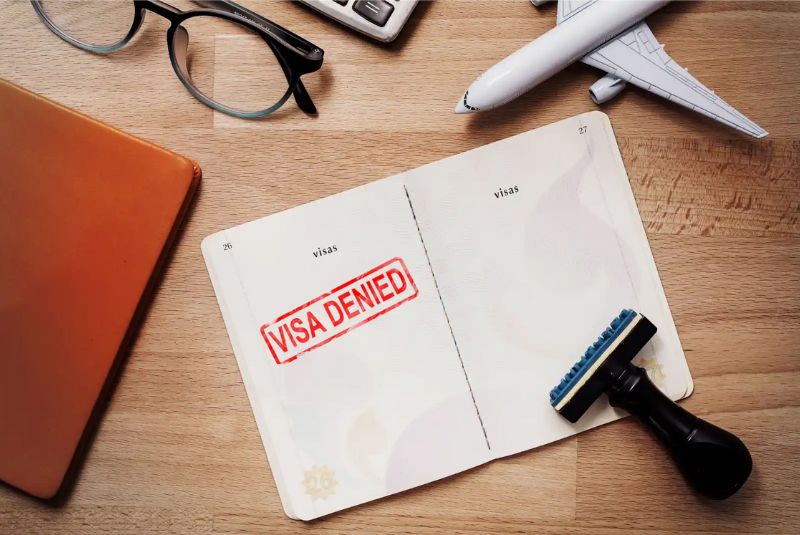
Understanding the potential reasons for e-visa rejection can help applicants avoid common pitfalls and increase their chances of a successful application. Here are some of the most frequent causes for Iran e-visa rejections:
Incomplete or Incorrect Application Form
One of the most common reasons for e-visa rejection is submitting an application form that is either incomplete or contains incorrect information. This includes:
- Missing mandatory fields
- Typographical errors in personal details
- Incorrect passport information
- Discrepancies between the information provided and the supporting documents
To avoid this, double-check all entries and ensure the information matches the details in your passport and other submitted documents.
Invalid or Poorly Scanned Documents
Documents that are unclear, poorly scanned, or do not meet the specified requirements can lead to rejection. Common issues include:
- Blurry or low-resolution scans
- Documents that are not fully visible or cut off
- Incorrect file format or size
Ensure that all documents are scanned in high resolution, are clear, and meet the specified format and size requirements.
Insufficient Financial Proof
Applicants need to demonstrate that they have sufficient funds to cover their stay in Iran. Rejections can occur if:
- Bank statements or financial documents are not provided
- Submitted financial proof does not reflect adequate funds
- Documents are outdated or not translated (if required)
Provide recent and accurate financial documents that clearly show your financial capability to support your travel and stay in Iran.
Criminal Record or Previous Visa Violations
A history of criminal activity or previous violations of visa regulations can result in an e-visa rejection. This includes:
- Any criminal record that might be considered a security threat
- Previous overstays or violations of visa conditions in Iran or other countries
Disclose any relevant history honestly, as attempting to hide such information can lead to automatic rejection.
Political Reasons or Diplomatic Issues
Political and diplomatic considerations between Iran and the applicant's home country can affect visa approvals. Rejections can occur due to:
- Strained diplomatic relations
- Political conflicts or sanctions
In such cases, it may be beneficial to consult with a travel agency or the Iranian embassy for guidance.
Inconsistencies in Travel Itinerary
Providing inconsistent or vague travel plans can raise suspicions and lead to rejection. Common issues include:
- Mismatched dates or locations in the itinerary
- Lack of detailed plans or purpose of visit
Ensure that your travel itinerary is clear, consistent, and matches the information provided in your application.
Suspicion of Intentions (e.g., Illegal Work, Overstay)
Authorities may reject an application if they suspect the applicant’s intentions are not aligned with the visa type requested. This includes:
- Suspicions of intending to work illegally
- Concerns about potential overstay beyond the visa validity
To mitigate this, be transparent about the purpose of your visit and provide supporting documents that validate your stated intentions, such as return flight tickets and accommodation bookings.
How to Avoid Iran E-Visa Rejection
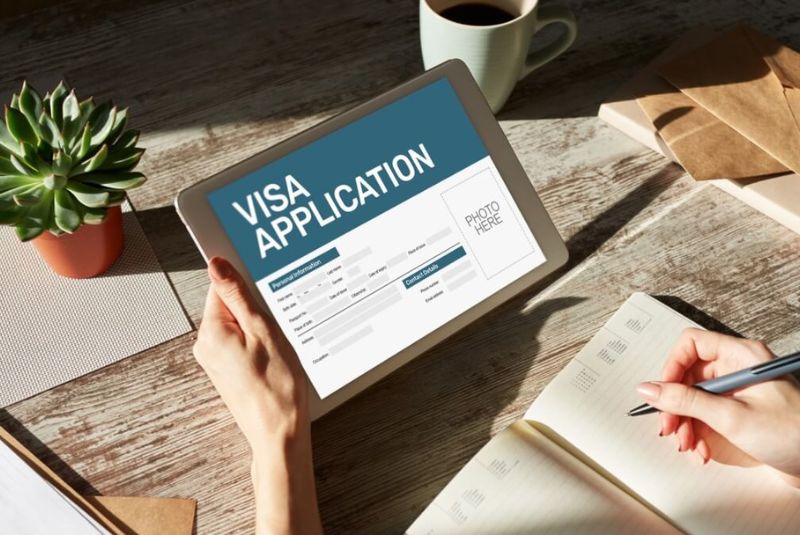
To increase your chances of successfully obtaining an Iran e-visa, it's important to pay close attention to detail and follow best practices throughout the application process. Here are some detailed guidelines to help you avoid common pitfalls:
Detailed Guidance on Correctly Filling Out the Application
- Read Instructions Carefully: Thoroughly read the guidelines and instructions provided on the official e-visa application website. Ensure you understand all the requirements before starting your application.
- Accurate Personal Information: Double-check your personal information, such as name, date of birth, and passport details, to ensure they exactly match your passport. Even small discrepancies can lead to rejection.
- Complete All Fields: Ensure every required field in the application form is filled out completely. If a field is not applicable, follow the instructions provided, such as entering "N/A" if allowed.
- Consistent Information: Make sure the information provided in the application form is consistent with the details in your supporting documents. Inconsistencies can raise red flags and lead to rejection.
- Review and Edit: Before submitting your application, review all entries carefully. Look for any typographical errors, incomplete fields, or incorrect information. Correct any mistakes before final submission.
Tips for Scanning and Uploading Documents
- High-Quality Scans: Use a high-resolution scanner to ensure that all documents are clear and legible. Avoid using low-resolution scans or photographs taken with a mobile phone.
- Complete Visibility: Ensure that all parts of the document are fully visible in the scan. Do not cut off any edges or corners, as incomplete documents can be grounds for rejection.
- Correct Format and Size: Follow the specified file format (e.g., PDF, JPEG) and size requirements mentioned in the application instructions. Compress files if necessary, but ensure that quality is not compromised.
- Document Checklist: Use a checklist to ensure all required documents are scanned and uploaded. This includes your passport bio-data page, passport-sized photograph, and any additional documents specific to your visa type.
Ensuring Consistency in Travel Plans and Documentation
- Detailed Itinerary: Provide a detailed and consistent travel itinerary. Include dates, locations, and accommodation details. Ensure these plans align with the information provided in your application form.
- Supporting Documents: Include supporting documents such as hotel bookings, flight reservations, and invitation letters (if applicable). Ensure that these documents are consistent with your stated travel plans.
- Proof of Return: Include proof of return travel, such as a return flight ticket. This demonstrates your intention to leave Iran at the end of your visit, reducing suspicion of potential overstay.
Importance of Honesty and Transparency
- Full Disclosure: Be honest and transparent in your application. Do not attempt to hide or falsify information. If you have a criminal record or previous visa violations, disclose this information upfront.
- Explain Special Circumstances: If there are any unusual aspects of your application (e.g., a long stay, multiple entries), provide clear explanations and supporting documents to justify your plans.
- Consular Guidance: If in doubt, consult with the Iranian consulate or embassy. They can provide guidance on how to address specific concerns or unusual circumstances in your application.
What to Do If Your Iran E-Visa is Rejected
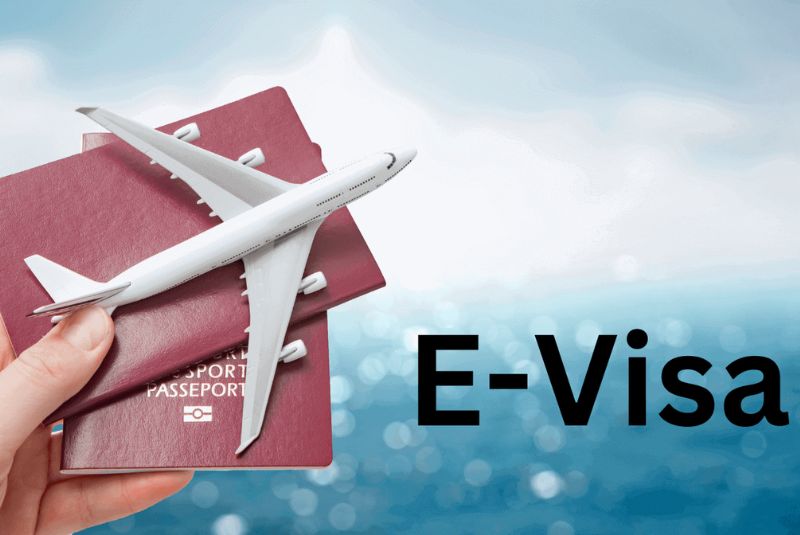
Facing an e-visa rejection can be disappointing, but there are steps you can take to address the issue and increase your chances of success on reapplication. Here’s what to do if your Iran e-visa is rejected:
Steps to Take Immediately After Rejection
- Review the Rejection Notice: Carefully read the rejection notice to understand the reasons for the denial. This notice will often specify the issues with your application, which can guide your next steps.
- Identify and Rectify Errors: Compare the rejection reasons with your application. Identify any errors or omissions that might have led to the rejection, such as incomplete fields, incorrect information, or poor-quality documents.
- Gather Additional Information: Collect any additional documentation or information that might address the reasons for rejection. This could include clearer scans of documents, additional financial proof, or more detailed travel plans.
Contacting the Iranian Consulate or Embassy for Clarification
- Find Contact Information: Locate the contact details for the nearest Iranian consulate or embassy. This information is usually available on their official website.
- Prepare Your Inquiry: Draft a clear and concise inquiry explaining your situation. Include your application reference number, the rejection notice, and any specific questions you have about the reasons for rejection.
- Reach Out: Contact the consulate or embassy via email, phone, or in person. Be polite and professional, and be prepared to provide additional documents or information if requested.
- Follow Up: If you do not receive a response within a reasonable time, follow up with another inquiry. Persistence can sometimes be necessary to get the clarification you need.
Reapplication Process and Timeline
- Correct the Issues: Make the necessary corrections to your application based on the feedback from the rejection notice and any additional guidance from the consulate or embassy.
- Submit a New Application: Complete a new e-visa application form. Ensure that all information is accurate and that all documents meet the required standards.
- Pay the Fees: Be prepared to pay the application fees again, as each application typically requires a new payment.
- Application Review Time: The review process for the reapplication can take several days to a few weeks, similar to the original application. Be patient and monitor the status of your application online.
Seeking Help from Travel Agencies or Visa Service Providers
Look for reputable travel agencies or visa service providers that specialize in Iran visas. Read reviews and ask for recommendations from other travelers.
Many agencies offer consultation services to help you understand the reasons for your rejection and how to address them. This can include reviewing your application, providing document checklists, and offering advice on presenting your case more effectively.
Application assistance agencies can assist you in preparing and submitting your reapplication. They can ensure that your documents are in the correct format, your application is complete, and that any previous issues are resolved.
Also, agencies often provide follow-up support, keeping you informed about the status of your application and liaising with the consulate or embassy on your behalf if needed.
Alternatives to E-Visa
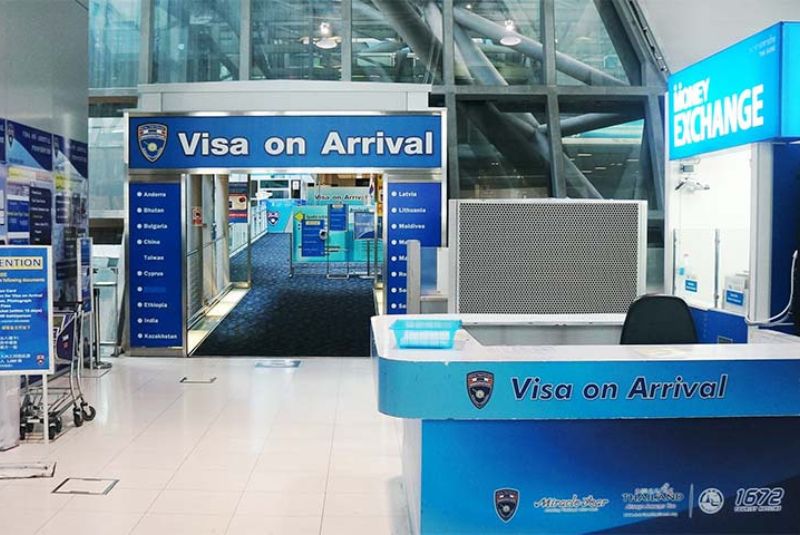
If your Iran e-visa application is rejected or you prefer other options, there are alternatives available for obtaining a visa. These include applying for a visa on arrival (VOA) and the traditional visa application through an embassy or consulate. Here’s a detailed look at each alternative, including their pros and cons:
Applying for a Visa on Arrival (VOA)
A Visa on Arrival (VOA) is available to tourists from certain countries who travel to Iran. This visa is obtained upon arrival at designated airports in Iran.
Process:
- Eligibility Check: Confirm that your nationality is eligible for a VOA.
- Preparation: Bring necessary documents, including a passport valid for at least six months, a passport-sized photo, travel itinerary, hotel booking confirmations, and proof of sufficient funds.
- Arrival: Upon arrival at the airport, proceed to the visa issuance desk.
- Application: Complete the visa application form and submit your documents.
- Fee Payment: Pay the visa fee, which varies by nationality.
- Approval: Wait for the visa to be processed and issued, usually within a few hours.
Traditional Visa Application through an Embassy or Consulate
Applying for a visa through an Iranian embassy or consulate involves submitting your application and supporting documents in person or by mail before your trip.
Process:
- Find Embassy/Consulate: Locate the nearest Iranian embassy or consulate.
- Prepare Documents: Gather required documents, including a completed application form, passport, passport-sized photos, travel itinerary, and financial proof.
- Submission: Submit the application and documents in person or by mail, along with the visa fee.
- Interview: Some applicants may be required to attend an interview.
- Processing Time: Wait for the visa to be processed, which can take several days to weeks.
- Collection: Collect your passport with the visa stamp once approved.
Pros and Cons of Each Alternative
Alternative | Pros | Cons |
Visa on Arrival (VOA) | - Convenient and quick - No need for advance application - Good for last-minute plans | - Uncertainty of approval - Limited to specific airports - Must carry necessary documents and pay fee on arrival |
Traditional Visa through Embassy/Consulate | - Higher certainty of approval - Possible multiple-entry visas - Potential for longer stays | - Time-consuming and longer processing - May require travel to embassy/consulate - More documentation and potential interview |
By evaluating these alternatives, you can choose the best visa option based on your specific circumstances, travel plans, and preferences. Whether you opt for a VOA for its convenience or a traditional visa for its assurance, being well-prepared will help ensure a smoother entry into Iran.
Final Takeaway
Despite the potential visa hurdles, Iran remains a fascinating and rewarding travel destination with its rich history, vibrant culture, and stunning landscapes. The process of obtaining a visa, whether through e-visa, VOA, or traditional methods, is a manageable step towards experiencing all that Iran has to offer. By being well-prepared and informed, you can navigate these processes smoothly to avoid Iran e-visa rejection and enjoy your trip to this majestic country.
Share your story!
Comment below and let us know about your Experience.
Your story inspires others!


Comment
Leave a Comment